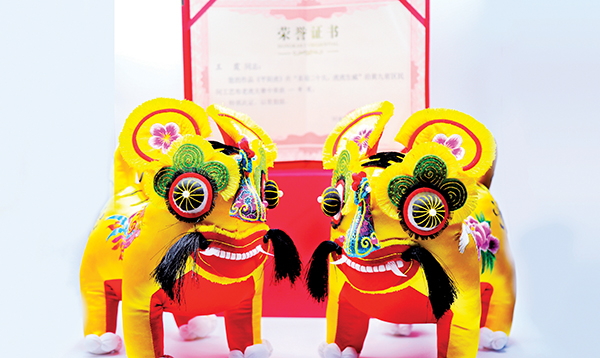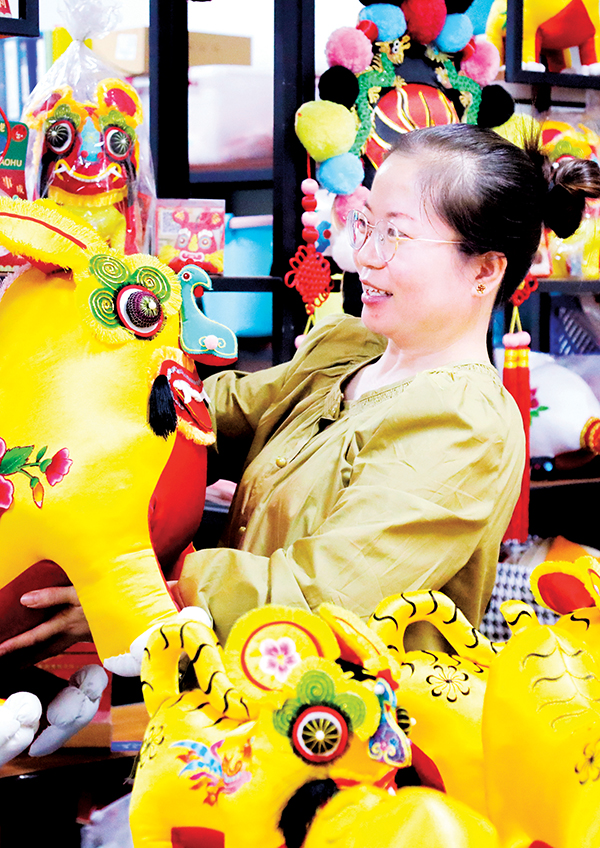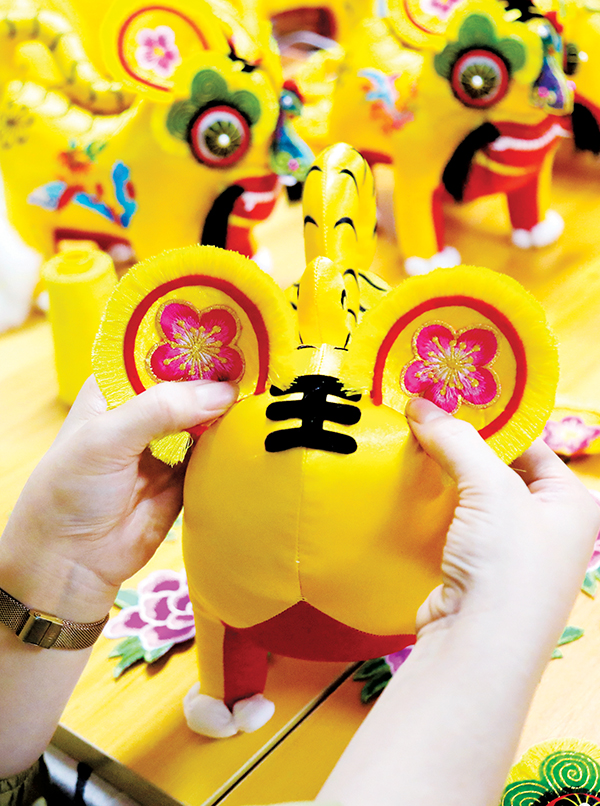Pingding cloth art: A legacy of craftsmanship

Pingding cloth tigers. [Photo/Yangquan Evening News]
Wang Xia, a fourth-generation inheritor of Pingding cloth art, creates intricate cloth tigers in her studio in Yangquan city, North China's Shanxi province. Her process, which includes drawing, cutting, embroidering, sewing, stuffing, and pasting, highlights the skillful craftsmanship behind this provincial intangible cultural heritage.

Wang Xiao, a fourth-generation inheritor of Pingding cloth art, as she creates cloth tigers. [Photo/Yangquan Evening News]
Pingding cloth art originated during the Ming (1368-1644) and Qing (1644-1911) dynasties over 600 years ago. Using cloth as the primary material, the art form combines traditional paper cutting, embroidery, and other crafting techniques. Under Wang's expert hands, these unique and lifelike creations continue to captivate modern consumers.
As a provincial intangible cultural heritage, Pingding cloth art reflects China's rich cultural history while evolving with contemporary tastes, proving its lasting appeal.

Wang demonstrates the techniques involved in crafting cloth tigers. [Photo/Yangquan Evening News]





